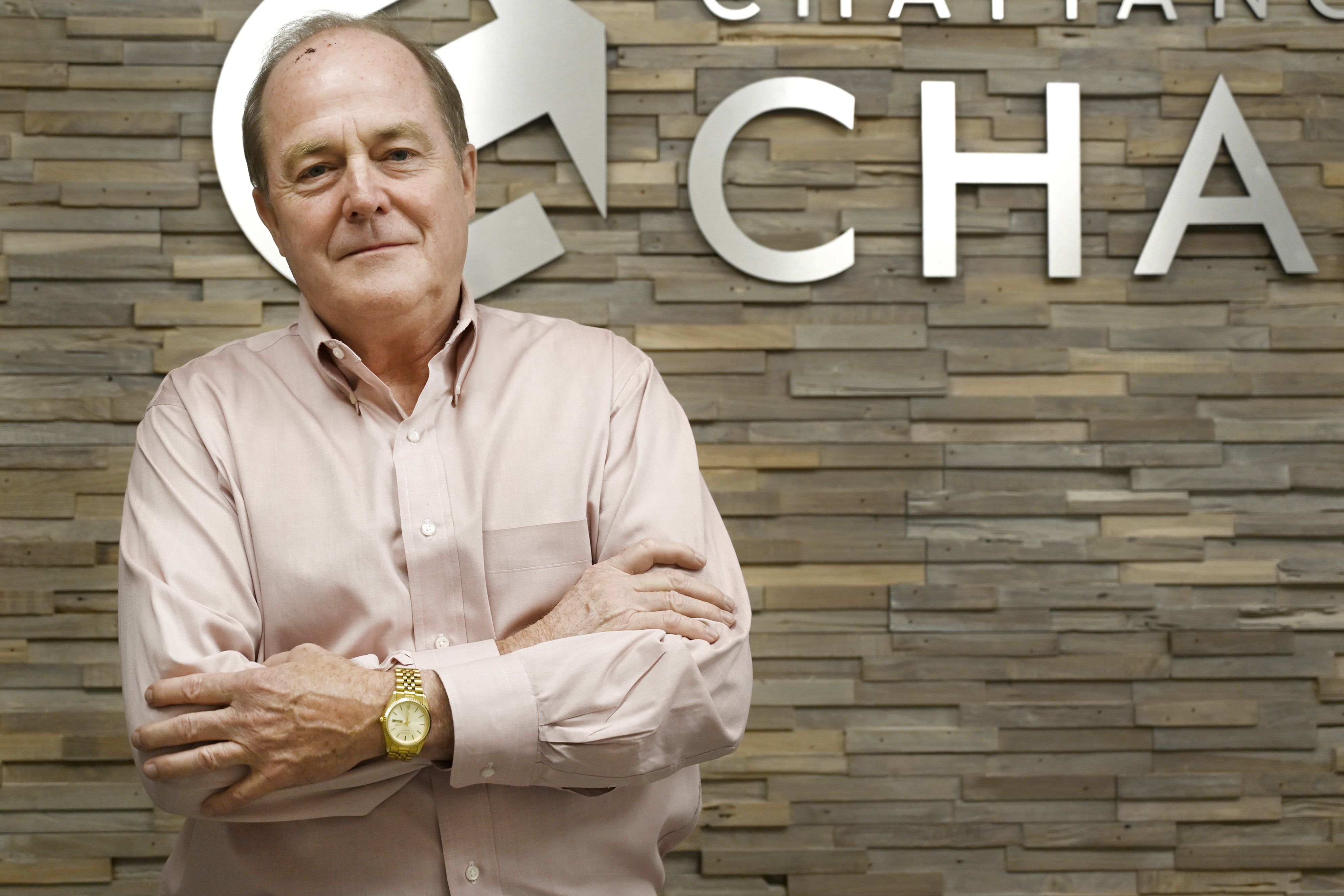Before Ben Cairns tired easily in the morning due to a slow heart rate that even exercise could not speed up.
For adults, the normal resting heart rate is between 60 and 100 per minute. Cairns’ heart rate would drop into the 30s some nights, but that changed after Dr Harish Manyam gave him a lead-free pacemaker.
The battery-operated cylindrical device stabilizes patients’ heart rhythms, Manyam, chief of cardiology at Erlanger Hospital, said by phone.
Cairns said in a phone interview that Manyam is amazing and described him as an exceptional doctor equipped for leadership.
“He basically has everything you want in a doctor,” Cairns said. “He’s smart. He’s researching. He’s technically proficient.”
Cairns said Manyam is a good listener with a friendly personality who does a good job of informing patients about the status of their case. Manyam helped Cairns manage his irregular heartbeat and occasional high blood pressure.
“He puts people at ease,” Cairns said.
Cairns, who serves as director of member and investor relations for the Chattanooga Area Chamber of Commerce, noticed that his heart rate began to slow down seven years ago. Manyam monitored Cairn’s heartbeat before suggesting a pacemaker.
(READ MORE: ‘The beauty of education’: Multimillion-dollar gift to UTC will help students solve real-world problems)
“My father had it, so I had the genes – it’s the family – to have the condition I have,” he said. I knew it was like any surgery: You put it off as long as you can until you absolutely need it.”
Along with his partner, a retired doctor, Cairns said he had read about traditional pacemakers and knew they sometimes became infected or dislodged from the chest.
Manyam said leadless atrial pacemakers were an option for Cain in the future, but they had not yet been approved by the US Food and Drug Administration. Cairns was attracted to the technology, which he said was a cleaner, safer option.
Cairns was originally scheduled for traditional pacemaker surgery, but when the FDA approved the technology, he called Manyam’s office, hoping to get it. He was told that he would have to wait a little longer because of how new it was.
Although he really needed a pacemaker, Cairns said he was willing to wait. He said he was happy to receive it in April.
“It’s improved my energy levels, my quality of life,” he said. “I have a lot of confidence in Dr. Manyam, and the tool he has put in has been wonderful.”
Before the pacemaker surgery, Cairns said he was limited in his activities, but no longer has light-headedness, can walk long distances and can breathe easily.
He said the recovery process is simple and easy.
(READ MORE: CHI Memorial brings rehab services to Ooltewah)
 Staff photo by Abby White/Ben Cairnes, seen Sept. 11, 2024, has a lead-free pacemaker, which he says has greatly improved his life.
Staff photo by Abby White/Ben Cairnes, seen Sept. 11, 2024, has a lead-free pacemaker, which he says has greatly improved his life.SUBJECT DIFFERENCE
Traditionally, pacemaker technology required wires or cables that run through the arteries through the arteries, Manyam said. The problem with conventional pacemakers is that they are subject to cardiac arrest.
“Think of them like a pen or pencil inside the heart,” Manyam said over the phone. “Those cords are still subject to the force that holds the heart and relaxes the heart and this radiation force as the heart beats in and out.”
These efforts account for 20% of the leads, Manyam said, and the calls must be physically removed after further processing.
Called “lead extraction”, he said the process of removing the lead is more dangerous than the procedure as the tissue grows on the lead, which enters the heart and its blood vessels.
(SIGN UP: Get today’s Chattanooga news, sports and entertainment straight to your inbox. Sign up for our free newsletters at timesfreepress.com/newsletters.)
Traditional pacemakers can lead to blood and urine infections as bacteria and pneumonia develop, Manyam said. Antibiotics can clear the patient’s blood, but some people have persistent infections that cannot be cleared, necessitating lead removal.
“There was a movement to move to wireless pacemakers and devices that don’t touch the blood,” Manyam said of the device’s launch. “If we can do that, we can reduce the chance of broken phones and the chance of having this infection.”
Developing a lead-free pacemaker has been a long time in the making, Manyam said. The process between the start of the technological tool and the final planting takes 10 years due to the lessons that take place during development.
Manyam has undergone 15 to 20 pacemaker surgeries. Like its traditional counterparts, the leadless pacemaker has operational risks related to swelling and bleeding in the leg.
“It may not be for everyone, but it gives us another tool in the box for patients who can benefit from new technology,” Manyam said.
Contact Leah Hunter at lhunter@timesfreepress.com or 423-757-6673.
#pacemaker #technology #improved #Chattanooga #patients #life #Chattanooga #Times #Free #Press